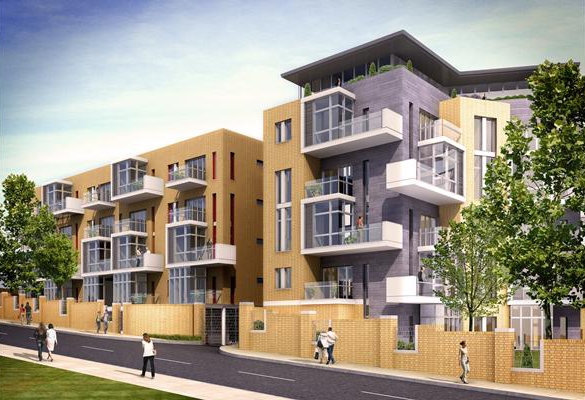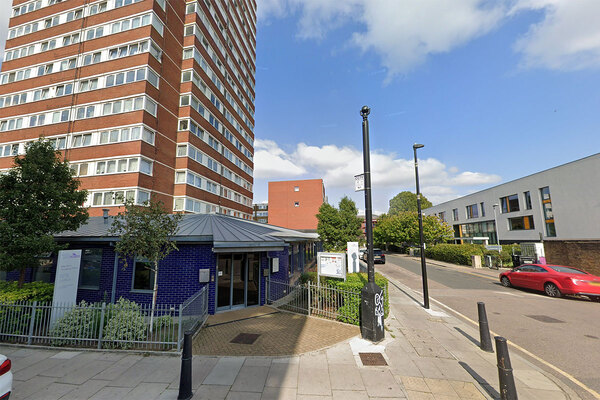Open alms: the almshouse charities building new homes
Almshouses play an important role in providing local, affordable housing. Caroline Thorpe takes a look at the 21st century incarnation of this model

Almshouses: a few, often centuries-old homes dotted around the country. Blink and you might miss them.
Or will you? The numbers may be small: 30,000 almshouses across England and Wales provide low-cost housing for around 36,000 people who are mainly, but not exclusively, older. Yet in recent years, these charity-owned homes, the oldest dating from the 10th century, have been steadily growing in number.
“We would like to support almshouses to build another 5,000 [homes] between now and 2030”
Records are patchy, says Nick Phillips, chief executive of umbrella organisation The Almshouse Association, but he estimates that almshouse charities are today building between 700 and 800 new homes a year, up from just a few hundred annually 20 years ago. He wants to sustain that momentum. “We would like to support almshouses to build another 5,000 between now and 2030,” he says.
So what is behind the trend, how are today’s new almshouses taking shape – and being paid for – and are they offering something that other affordable housing providers do not?
Two key factors are driving development, Mr Phillips argues. “The first is that the demand for affordable, genuinely affordable, housing is growing,” he says. While that will surprise nobody, the nature of almshouses, often established with a lump sum from a generous benefactor, means this is the only type of housing they offer.
“Most almshouse documentation includes statements like, ‘living in an almshouse should not create greater hardship for residents’,” Mr Phillips explains. “So you have a weekly maintenance contribution based on the cost of running the almshouses and putting something aside, for example for a new roof. That comes in fairly close to [social rents]. Each charity sets its own [charge], but it is usually a very long way [below] the government’s definition of affordable rent at 80% of market levels.”
Alleviating loneliness
Second, he argues, the pandemic has increased both the profile of and the demand for almshouse accommodation. Developments are typically small scale and centred around communal features such as shared courtyards and gardens designed to foster neighbourliness. Moreover, the trustees of each almshouse charity are usually local people who know the residents and their needs. “Almshouses are driven by the alleviation of loneliness and isolation; anecdotal feedback is that during the pandemic people have done very well in almshouses because they have that network. There is the recognition among local communities that the small-scale, charity-led model carries the benefits of a safe and secure micro-community.”
“When I arrived, we still had quite a few bedsits and I felt very strongly that those are not the accommodation of the 21st century”
Researcher Dr Alison Pooley, who last year co-authored a Royal Institution of Chartered Surveyors report exploring the role of almshouses, believes these charities offer an “antidote to the commoditisation of housing that has run rampant for too long”. She observes a groundswell of interest in almshouse development. She says that earlier this year, a webinar promoting the almshouse model drew a wide audience “from different local authorities, housing associations, almshouse charities and research interests which made us aware of the relevance; it captured the imagination of lots of people”.
Despite this momentum, almshouses with development ambitions face significant challenges.
The majority have fewer than 10 homes and no paid staff, leaving many lacking the skills and resources required for new build projects. Even the charities large enough to support paid staff can struggle, especially to compete with larger developers for land.
“Almshouses continue to have an important role providing affordable housing locally for people in need”
Anne Taylor has been chief executive of Thorngate Churcher Trust – which owns 128 homes in Gosport, Hampshire – since 2011. She has driven three new developments totalling 14 homes, is currently planning a fourth and says new homes were imperative to meet “huge” demand. “When I arrived, we still had quite a few bedsits and I felt very strongly that those are not the accommodation of the 21st century. I felt that if we were a progressive organisation, we should be at the forefront of standards.”
Despite her determination to build, she says: “It’s just a long and very difficult process and just when you think you’ve got somewhere, you find there is something else.” Land and planning have proved particularly troublesome. “Up until 2019, we’ve been developing on our own land, so we’ve had to find creative ways to infill spaces and in two cases we’ve demolished buildings and rebuilt,” she explains. “For the past two years, we’ve been looking for land and have been negotiating for sites, but we’re in the South East of England, on a peninsula, and we’re in competition with developers. It’s incredibly difficult to find viable land.”
In numbers
1,602
UK almshouse charities
400
Number of almshouse charities that employ wardens
294
Number of almshouses that are registered providers, eligible for Homes England grant funding
Creative funding sources
So how do almshouses make developments stack up financially? “Creatively” is the answer from Dr Pooley’s report, which identifies that more than 40% of new build almshouse units have been funded without public grant since 2008.
Alternative sources of funding include using reserves (possibly through selling investments, land or properties), cross-subsidy from selling part of the site to another developer, bank loans and grants from charities. Ms Taylor has also made use of charitable trust funds.
“The priority is to provide good quality care to as many later-living people as we can, rather than feel a fuzzy nostalgia about a nice building”
Meanwhile, Homes England provided £6,113,866 of grant funding to almshouses between 2016 and 2021, contributing to 200 new homes. The agency offers them bespoke rent-setting arrangements, in line with their individual charitable objectives.
“Almshouses continue to have an important role providing affordable housing locally for people in need. We welcome proposals for grant funding from both existing and new investment partners to maximise the impact of funding available in the Affordable Homes Programme 2021-26,” says a spokesperson for the agency.
Case study: Southwark Charities
What: Replacement of a 25-almshouse scheme opened in 1973 with a 22-storey office building and a separate 15-storey almshouse comprising one-bedroom flats. Features include wheelchair accessibility throughout, 2.9 metre-high ceilings and the ambition to meet Passivhaus standards where possible.
Where: Blackfriars, central London
When: Expected completion 2025
Architect Nigel Dyke has seen first-hand how selling outdated almshouses can fund not only new build, but also significantly improved homes – particularly for older people. His firm, Alec French Architects, has designed three new almshouse developments for Bristol Charities, which owns 92 almshouse flats for over-60s and a 60-bed extra-care scheme in the Bristol area.
“Each of the three almshouses we’ve built very much replaced a historic almshouse… It’s all very well having historic buildings, but if you can’t get level access or a lift in there, it is not fit for purpose,” he says.
Features of the new buildings, he adds, include generous space standards, communal lounges and gardens and, in the case of the extra-care scheme, three separate blocks with different colour schemes to assist people living with dementia. “The priority is to provide good quality care to as many later-living people as we can, rather than feel a fuzzy nostalgia about a nice building.”
Elsewhere, Mr Phillips from The Almshouse Association says, almshouse charities are exploring cutting-edge technologies and environmental standards in their new builds (see case study, above).
While to the naked eye the development efforts and outlook of almshouses may not differ greatly from those of, say, a small housing association, there are key differences. Significantly, they are not subject to the Right to Buy or the Right to Acquire.
Furthermore, almshouse charities can be established to target specific groups in housing need. Mr Phillips says he is in talks with the Church of England about land for almshouses for key workers, and his association is in early discussions about establishing a charity to house tenant farmers. “What drives almshouses at the start is where they see there’s a need for housing in a sector that’s not being supported elsewhere,” he says.
Likewise, Dr Pooley is excited by the potential for new, targeted charities prepared to build for generations to come. She says: “One of the things we like to muse on is the 1,000-year history of almshouses – and the 1,000-year future.”
Sign up for our care and support newsletter
Already have an account? Click here to manage your newsletters












